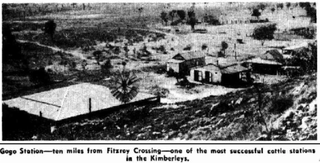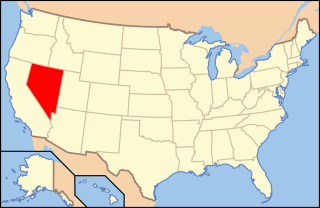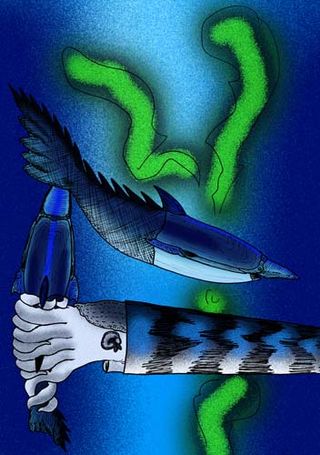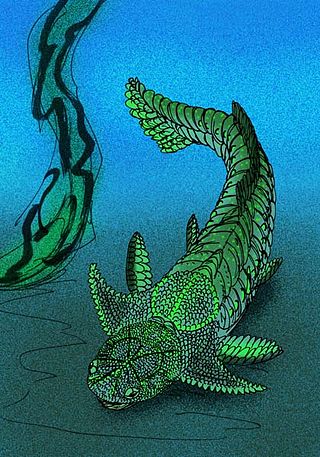
Chondrichthyes is a class that contains the cartilaginous fishes that have skeletons primarily composed of cartilage. They can be contrasted with the Osteichthyes or bony fishes, which have skeletons primarily composed of bone tissue. Chondrichthyes are jawed vertebrates with paired fins, paired nares, scales, and a heart with its chambers in series. Extant chondrichthyes range in size from the 10 cm finless sleeper ray to the 10 m whale shark.

The Devonian is a geologic period and system of the Paleozoic era, spanning 60.3 million years from the end of the Silurian, 419.2 million years ago (Mya), to the beginning of the Carboniferous, 358.9 Mya. It is named after Devon, England, where rocks from this period were first studied.

Acanthodii or acanthodians is an extinct class of gnathostomes. They are currently considered to represent a paraphyletic grade of various fish lineages basal to extant Chondrichthyes, which includes living sharks, rays, and chimaeras. Acanthodians possess a mosaic of features shared with both osteichthyans and chondrichthyans. In general body shape, they were similar to modern sharks, but their epidermis was covered with tiny rhomboid platelets like the scales of holosteians.

Placodermi is a class of armoured prehistoric fish, known from fossils, which lived from the Silurian to the end of the Devonian period. Their head and thorax were covered by articulated armoured plates and the rest of the body was scaled or naked, depending on the species. Placoderms were among the first jawed fish; their jaws likely evolved from the first of their gill arches.

Protaspididae is an extinct family of pteraspidid heterostracan agnathans. Fossils of the various genera are found in early Devonian-aged marine strata. Protaspidids were once thought to represent a transitional form between the Pteraspididae and the Psammosteida, bearing the broad head shield shape of the latter, due to a more benthic (bottom-dwelling) existence, but recent phylogenical comparisons demonstrate that the protaspidids are actually highly derived pteraspidids, and that the anchipteraspidids, the most primitive of pteraspidids, are the sister-group of the Psammosteids.

Arthrodira is an order of extinct armored, jawed fishes of the class Placodermi that flourished in the Devonian period before their sudden extinction, surviving for about 50 million years and penetrating most marine ecological niches. Arthrodires were the largest and most diverse of all groups of placoderms.

Cheirolepis is an extinct genus of ray-finned fish that lived in the Devonian period of Europe and North America. It is the only genus yet known within the family Cheirolepidae and the order Cheirolepiformes. It was among the most basal of the Devonian actinopterygians and is considered the first to possess the "standard" dermal cranial bones seen in later actinopterygians.

The Gogo Formation in the Kimberley region of Western Australia is a Lagerstätte that exhibits exceptional preservation of a Devonian reef community. The formation is named after Gogo Station, a cattle station where outcrops appear and fossils are often collected from, as is nearby Fossil Downs Station.

Hybodontiformes, commonly called hybodonts, are an extinct group of shark-like chondrichthyans, which existed from the late Devonian to the Late Cretaceous. They form the group of Elasmobranchii closest to neoselachians, the clade of modern sharks and rays. Hybodonts were named and are distinguished based on their conical tooth shape. They are also noted for the presence of a spine on each of their two dorsal fins. They were abundant in marine and freshwater environments during the late Paleozoic and early Mesozoic, but were rare in open marine environments by the end of the Jurassic, having been largely replaced by modern sharks, though they were still common in freshwater and marginal marine habitats. They survived until the end of the Cretaceous, before going extinct.

Ferenc Ilyés is a retired Hungarian handball player.

Paleontology in Nevada refers to paleontological research occurring within or conducted by people from the U.S. state of Nevada. Nevada has a rich fossil record of plants and animal life spanning the past 650 million years of time. The earliest fossils from the state are from Esmeralda County, and are Late Proterozoic in age and represent stromatolite reefs of cyanobacteria, amongst these reefs were some of the oldest known shells in the fossil record, the Cloudina-fauna. Much of the Proterozoic and Paleozoic fossil story of Nevada is that of a warm, shallow, tropical sea, with a few exceptions towards the Late Paleozoic. As such many fossils across the state are those of marine animals, such as trilobites, brachiopods, bryozoans, honeycomb corals, archaeocyaths, and horn corals.

The evolution of fish began about 530 million years ago during the Cambrian explosion. It was during this time that the early chordates developed the skull and the vertebral column, leading to the first craniates and vertebrates. The first fish lineages belong to the Agnatha, or jawless fish. Early examples include Haikouichthys. During the late Cambrian, eel-like jawless fish called the conodonts, and small mostly armoured fish known as ostracoderms, first appeared. Most jawless fish are now extinct; but the extant lampreys may approximate ancient pre-jawed fish. Lampreys belong to the Cyclostomata, which includes the extant hagfish, and this group may have split early on from other agnathans.

Panamintaspis snowi is an extinct species of pteraspidid heterostracan agnathan which existed during the early Middle Devonian period of Death Valley, California. Fossils are found in Late Emsian-aged marine strata of the Lost Burro Formation. P. snowi strongly resembles Pteraspis, though while it was originally described as a member of the same family, Pteraspididae, a recent phylogenetic reassessment of the order Pteraspidiformes places P. snowi within the paraphyletic family "Protopeteraspidae," as the sister taxon of the suborder Pteraspidoidei.

Blieckaspis priscillae is a pteraspidid heterostracan agnathan from the Middle Devonian of North America.

Anglaspis is an extinct genus of cyathaspidiform heterostracan agnathan. Fossils are found in marine strata of Europe, from the late Silurian period until the genus' extinction during the Early Devonian. As with other cyathaspidiforms, individuals of Anglaspis had dorsal and ventral plates covering the forebody, gill pouches, and nasal openings that lay on the roof of the oral cavity.
The 2016 Nevada Wolf Pack football team represented the University of Nevada, Reno in the 2016 NCAA Division I FBS football season. The Wolf Pack were led by fourth–year head coach Brian Polian and played their home games at Mackay Stadium. They were members of the West Division of the Mountain West Conference. They finished the season 5–7 and 3–5 in Mountain West play to finish in a three–way tie for third place in the West Division.

Antarctilamna is an extinct genus of Devonian shark originally exemplified by Antarctilamna prisca from South Eastern Australia and Antarctica. The latest occurring described species is Antarctilamna ultima from the Waterloo Farm lagerstätte in South Africa. Antarctilamna has robust ctenacanthid-like spines which lack a deep insertion area, and are borne in front of the first dorsal fin; in addition to distinctive diplodont teeth with small intermediate cusps. Antarctilamna-like spines, known from the Bunga Beds locality in Australia have been ascribed to A. prisca.

Actinolepis is an extinct genus of actinolepid placoderm from the Early Devonian. Four species are known: A. magna from Estonia, A. spinosa from Latvia, the type species A. tuberculata from New Zealand and A. zaikai from Belarus.

Phoebodus is an extinct genus of phoebodontiform elasmobranch, known from over a dozen species found worldwide spanning the middle to late Devonian. Most species are only known from their isolated tricuspid teeth, but one species, Phoebodus saidselachus from the Late Devonian of Morocco, is known from a complete skeleton, estimated to have been 1.2 metres in total length in life, which shows that it had a slender body superficially similar to that of the living frilled shark. The teeth of Phoebodus and frilled sharks are also morphologically similar, and are designed for grasping prey. Phoebodus probably consumed small prey items that were capable of being swallowed whole.


















